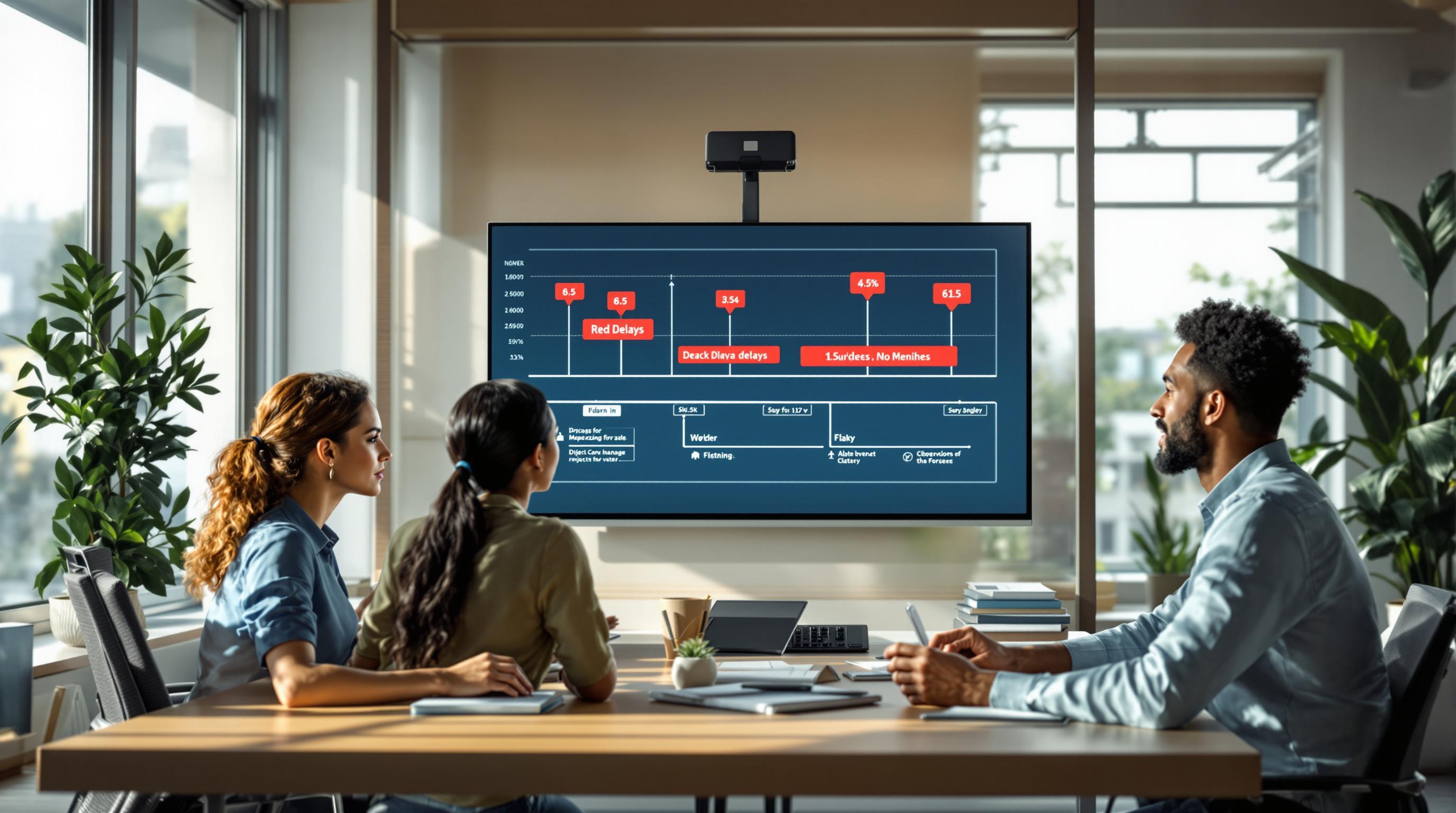Want to modernize your systems without overspending? Here’s how startups can upgrade step by step, even on tight budgets:
- Focus on Key Systems First: Prioritize upgrades that directly impact operations, customer experience, or revenue. Use a phased approach to minimize disruptions.
- Update Gradually: Break updates into small, manageable phases to reduce risks and costs.
- Move to the Cloud: Switch to cloud systems to save on upfront hardware expenses and scale resources as needed.
- Break Down Large Systems: Shift from monolithic systems to modular designs like microservices for easier updates.
- Use Free and Open-Source Tools: Leverage tools like PostgreSQL, Kubernetes, and Jenkins to cut software costs while maintaining functionality.
- Add Automated Testing: Implement automated testing to catch issues early, saving time and money on fixes.
- Work with Expert Partners: Collaborate with experienced tech partners to fill skill gaps, optimize your tech stack, and scale efficiently.
Key takeaway: Modernization doesn’t have to be overwhelming or expensive. Start small, focus on what matters most, and use a combination of these strategies to align with your goals and budget.
EP12: Crafting the Digital Modernization Roadmap for Architects
1. Focus on Key Systems First
Start by targeting the systems that matter most. Concentrating on these critical components helps you get the most out of your resources while keeping costs under control.
Pinpoint Mission-Critical Systems
Look for systems that:
- Directly impact essential operations
- Improve customer interactions
- Contribute to revenue generation
Weigh Impact Against Investment
Use a priority matrix to decide what needs attention first. Consider:
- How much the system affects your business (e.g., revenue, customer satisfaction, efficiency)
- The investment needed (e.g., time, resources, potential disruptions)
For example, if an outdated app for customers is slowing things down, prioritize its upgrade over internal tools that are still performing well. This approach ensures a clear, step-by-step modernization plan.
Take a Phased Approach
Break the process into manageable steps:
- Assessment: Identify where performance is lagging.
- Planning: Develop a roadmap that focuses on the most critical areas.
- Implementation: Upgrade the key features to deliver quick, noticeable improvements.
Think About Your Technology Stack
When upgrading systems, consider:
- Moving to cloud-native architectures
- Using modular designs
These choices make your systems scalable and adaptable, ensuring that early upgrades continue to deliver value as your business grows.
2. Update in Small Steps
Make updates gradually to save money and lower risks by working in small, manageable phases. This step-by-step approach ensures steady progress while keeping things under control.
Create a clear roadmap by identifying which components to update first and setting specific milestones. Begin with less critical functions to test your methods and troubleshoot with minimal impact. This helps uncover potential problems early and boosts your team’s confidence.
Keep a close eye on each update, making adjustments as needed to maintain steady improvements and stay within budget.
3. Move to Cloud Systems
Switching to cloud systems is a smart way to lower upgrade costs while keeping operations flexible. By moving from on-premise setups to the cloud, you can reduce expenses and adjust resources as needed, avoiding large upfront hardware costs.
To get the most out of your cloud migration, focus on these key areas:
- Resource Management: Look for providers that offer auto-scaling to handle changing demands efficiently.
- Cost Structure: Select pricing models, like pay-as-you-go or prepaid options, that align with your usage patterns.
- Integrated Services: Pick providers that include monitoring, security, and backup solutions to avoid extra expenses.
Start by identifying the key services to migrate and create a step-by-step plan. This phased approach helps ensure a smooth transition with minimal interruptions.
sbb-itb-51b9a02
4. Break Down Large Systems
Divide large, monolithic systems into smaller, manageable modules. This makes updates and maintenance much simpler. By shifting to microservices, you can update individual modules without affecting the entire system. This approach works well with incremental modernization.
- Simplifies updates and maintenance
5. Use Free and Open Source Tools
Free and open-source tools offer a cost-effective way to modernize systems while maintaining strong functionality and security. Below are examples of open-source solutions that cater to various enterprise needs.
- Database Management: PostgreSQL serves as a powerful alternative to expensive proprietary databases. Big platforms like Instagram and Reddit rely on PostgreSQL for its performance and low licensing costs.
- Container Orchestration: Kubernetes, originally created by Google and now managed by the Cloud Native Computing Foundation, provides scalability and is widely used – all without licensing fees.
- Monitoring and Analytics: Pairing Grafana with Prometheus delivers reliable monitoring and analytics, helping organizations keep systems running smoothly without the hefty price tag of commercial tools.
- Development Tools: Jenkins is a go-to option for continuous integration and deployment (CI/CD) due to its flexibility and compatibility with numerous development platforms.
When choosing open-source tools, consider these factors:
- Community Activity: Opt for tools with active development and frequent updates.
- Documentation: Make sure the tool has clear, up-to-date documentation.
- Enterprise Use: Select tools already proven in real-world enterprise environments.
While the software itself is free, don’t forget that setup and maintenance come with costs. For critical systems, investing in commercial support can ensure long-term reliability.
6. Add Automated Testing
Automated testing helps reduce costs and improve system reliability by catching problems early, saving teams from costly fixes later.
Key Testing Types to Consider:
- Unit Testing: Test individual components separately to ensure they work as intended.
- Integration Testing: Use automated tests to check how components interact and avoid system-wide issues.
Best Practices for Implementation:
- Focus testing efforts on critical business functions first.
- Integrate automated tests into your continuous integration (CI) framework.
- Use test-driven development (TDD) when building new features.
- Continuously track test coverage to identify gaps.
Tips to Save Costs:
- Start with high-priority areas that have the biggest impact.
- Use free, open-source testing tools to reduce expenses.
- Run tests in parallel to speed up the process.
- Automate test reporting to quickly identify and fix issues.
7. Work with Expert Partners
After making some initial improvements, collaborating with experienced partners can help cut costs and improve system reliability.
Key Selection Criteria
When selecting partners for modernization, prioritize these capabilities:
- Technical Expertise: Seek partners with a solid track record in MVP development, AI solutions, product engineering, application updates, software consulting, and UI/UX design.
- Stage-Specific Solutions: Ensure their services align with your startup’s current growth phase.
- Proven Framework: Opt for partners who follow a structured, disruption-free approach that adheres to industry best practices.
Cost-Effective Partnership Strategies
- MVP Development in 90 Days: Leverage frameworks like AlterSquare‘s I.D.E.A.L Delivery Framework to create an MVP quickly, saving both time and resources.
- Team Augmentation: Bring in additional team members to cover technical gaps and scale up or down as needed, avoiding long-term commitments.
- Strategic Tech Consultation: Focus on areas like optimizing your tech stack, planning architecture, and improving performance and scalability.
Implementation Best Practices
| Focus Area | Benefits | Cost-Saving Impact |
|---|---|---|
| Tech Stack Consultation | Avoid technology missteps | Cuts future migration expenses |
| Rapid Prototyping | Test ideas quickly | Reduces wasted resources |
| Integrated Product Management | Streamlines the development process | Boosts team efficiency |
| Post-Launch Support | Ongoing improvements | Prevents expensive emergency fixes |
These approaches help reduce risks during modernization efforts.
Risk Mitigation
To further protect your investment, choose partners who:
- Maintain system functionality throughout the modernization process
- Limit disruptions for customers during updates
- Provide clear, actionable roadmaps
- Commit to ongoing improvements over time
Conclusion
You can update your systems effectively and without overspending by using these seven approaches.
Start by analyzing the cost and impact of each strategy. Some options might need a bit more upfront spending but lead to long-term savings, while others allow for smaller, quicker updates with less initial cost. The right choice depends on your startup’s current stage and goals.
The best results often come from combining these strategies to fit your specific needs. For example, early-stage startups might focus on setting up cloud systems and automated testing to build a strong base. Meanwhile, growing companies could focus on simplifying complex systems and working with experts to scale smoothly.
Modernization isn’t a one-time task – it’s an ongoing process. Prioritize your efforts, work iteratively, and create a roadmap that balances your budget with your long-term goals.
Key recommendations:
- Assess your systems: Take stock of your current setup and pinpoint problem areas before starting.
- Calculate potential ROI: Determine the return on investment for each strategy to prioritize effectively.
- Track progress: Use performance metrics to measure success and adjust as needed.
- Stay flexible: Be ready to shift strategies based on outcomes and evolving business needs.









Leave a Reply